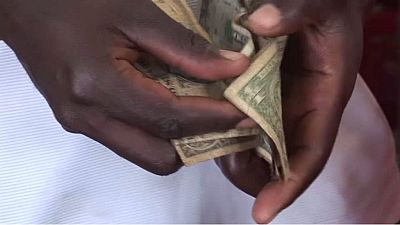Zimbabwe
Zimbabwe’s central bank plans to issue more “bond notes” beyond its stated limit of $200 million, its governor said on Wednesday, In comments likely to stoke fears the country is returning to the era of money printing and hyperinflation.
Governor John Mangudya said the Reserve Bank of Zimbabwe was in talks with an unnamed creditor for a loan to underpin the extra notes, which are needed to counter a shortage of U.S. dollars that is crippling the economy.
“We are in the process of negotiating those facilities and then we’ll come back to yourselves after we have made significant progress,” he told reporters after a lecture at the University of Zimbabwe. He declined to give more details.
The southern African country abandoned its own currency in 2009 in favour of the U.S. dollar to end hyperinflation, which had hit 500 billion percent the year before.
However, at the time, Zimbabweans were buying loaves of bread with wads of Z$100 trillion Zimbabwe dollar notes.
Faced with acute dollar shortages, the country introduced the bond notes in November, in an attempt to boost the amount of cash in day-to-day circulation.
The notes are scrip, supposedly backed by U.S. dollars loaned to the government, and can be used like cash. Officially, they are pegged to the dollar at a rate of 1:1, but on the street $1 fetches up to 1.20 in bond notes.
The central bank denied the notes were a back-door reintroduction of the discredited Zimbabwe dollar, saying they were backed by a $200 million loan from the Cairo-based Afreximbank, a development bank. It also pledged not to exceed the $200 million limit.
Afreximbank has not confirmed the existence of the loan and declined to comment on Mangudya’s remarks.
Without proper reserves to back them up, the bond notes have no intrinsic value and will be prone to sudden and violent devaluation. The IMF said last week the notes and a rise in bank deposits not backed by dollars were already fuelling inflation, now forecast to reach 9.6 percent next year.






![Cyber Africa Forum highlights Benin's bold digital resilience [Business Africa]](https://static.euronews.com/articles/stories/09/33/14/38/320x180_cmsv2_675083a0-3d42-5b59-aba8-cbd15242e6d9-9331438.jpg)







Go to video
Zimbabwe court rejects opposition bid to block Gukurahundi massacre hearings
02:19
South African actor Embeth Davidtz makes directorial debut with Rhodesia-set drama
Go to video
World Bank grants South Africa $1.5B for infrastructure, green energy
11:16
Angola hosts U.S.-Africa summit amid calls to revive trade ties {Business Africa}
01:30
Abu Dhabi hosts first Global South Economic Forum
01:23
Fourth edition of China-Africa Economic and Trade Expo opens in Changsha